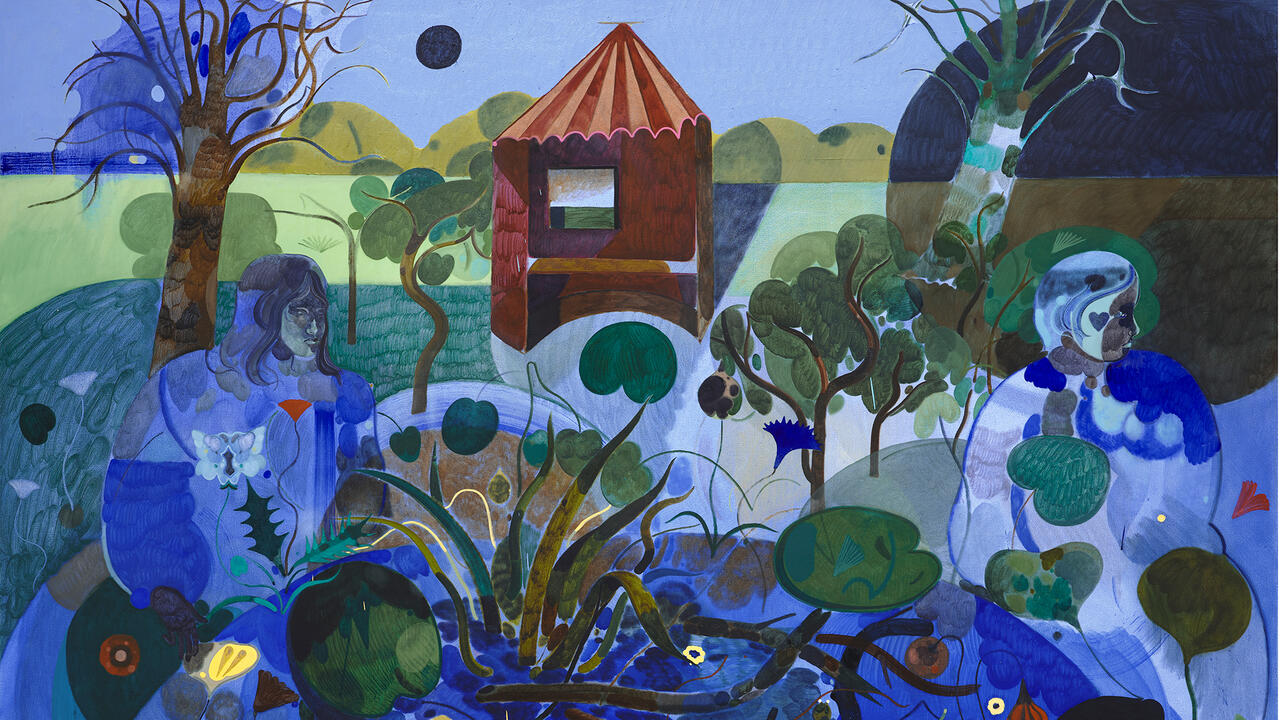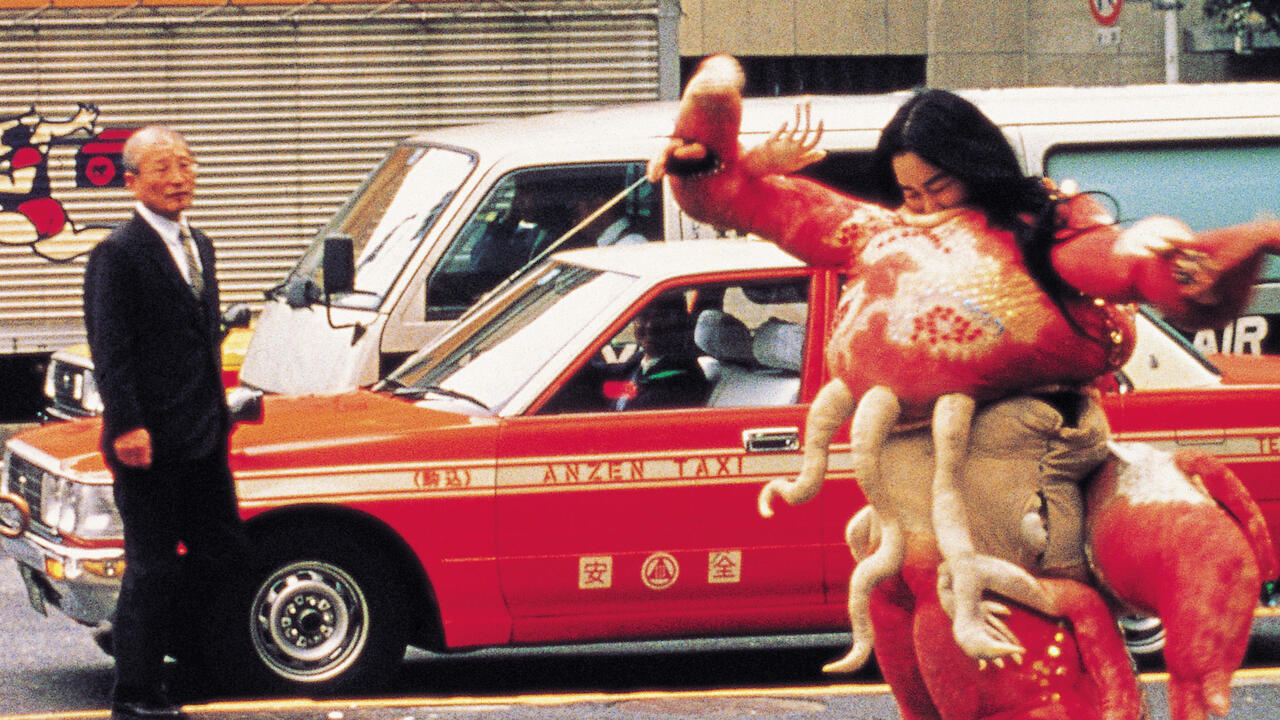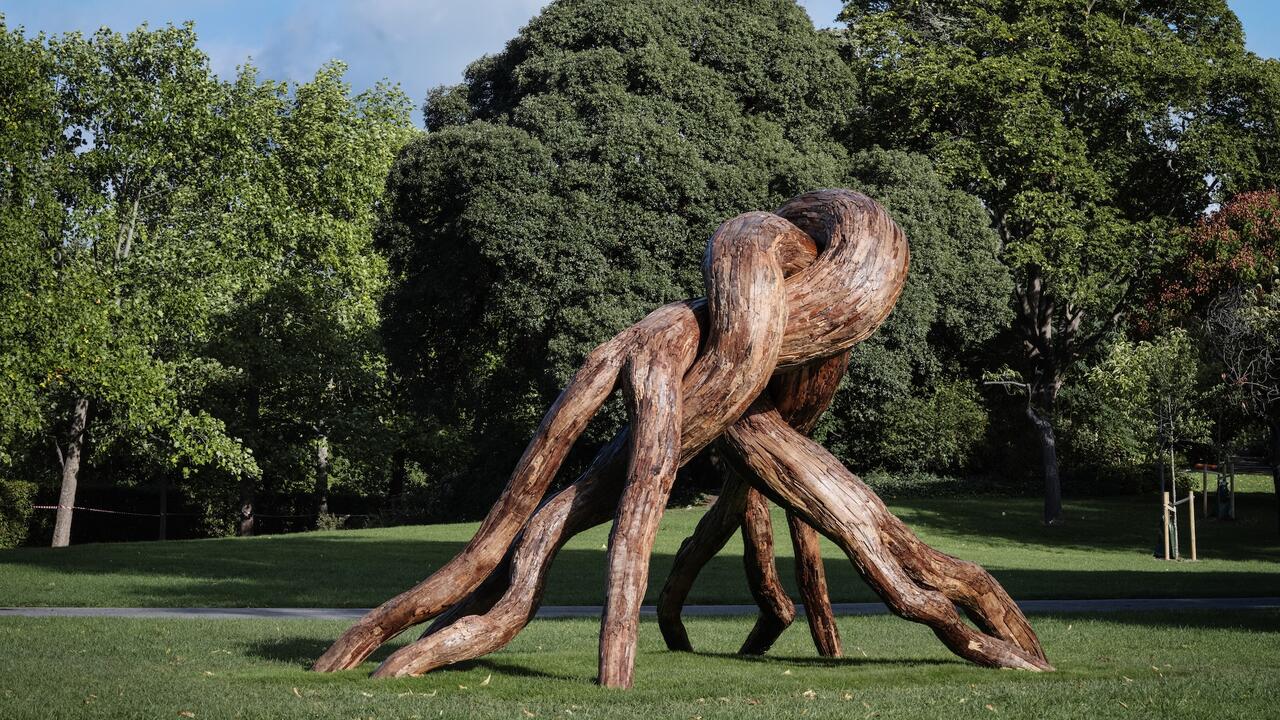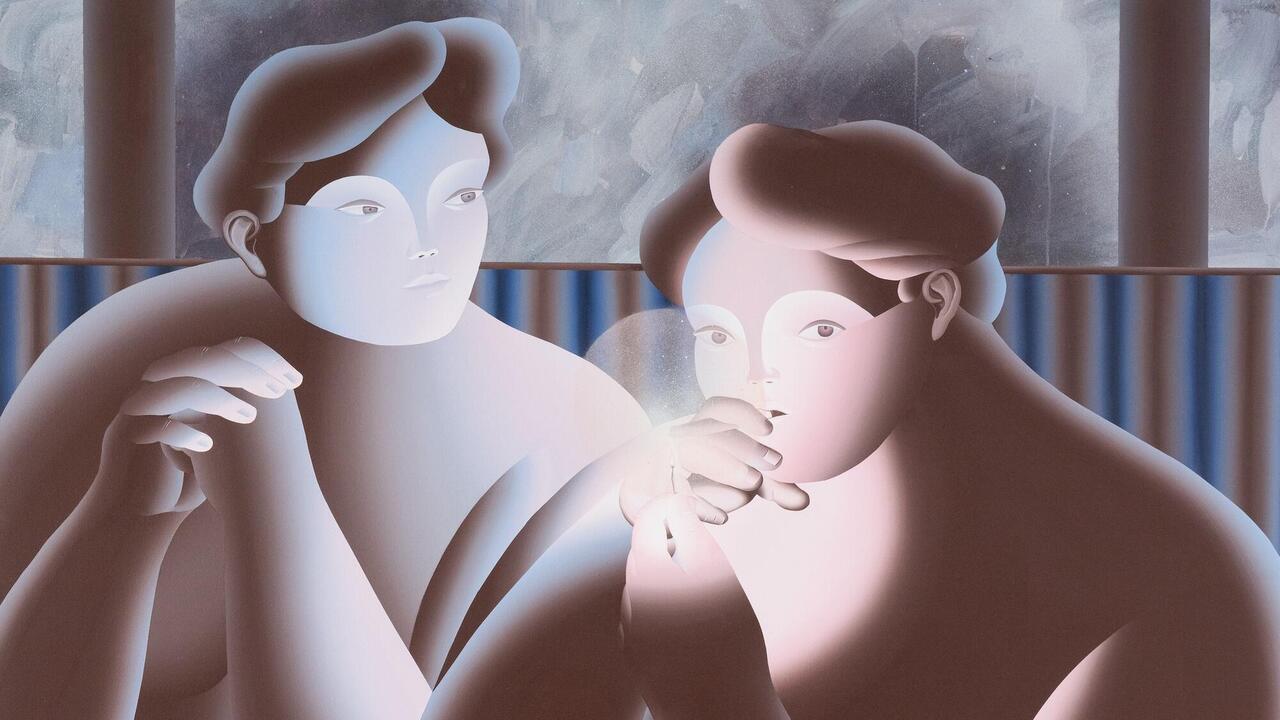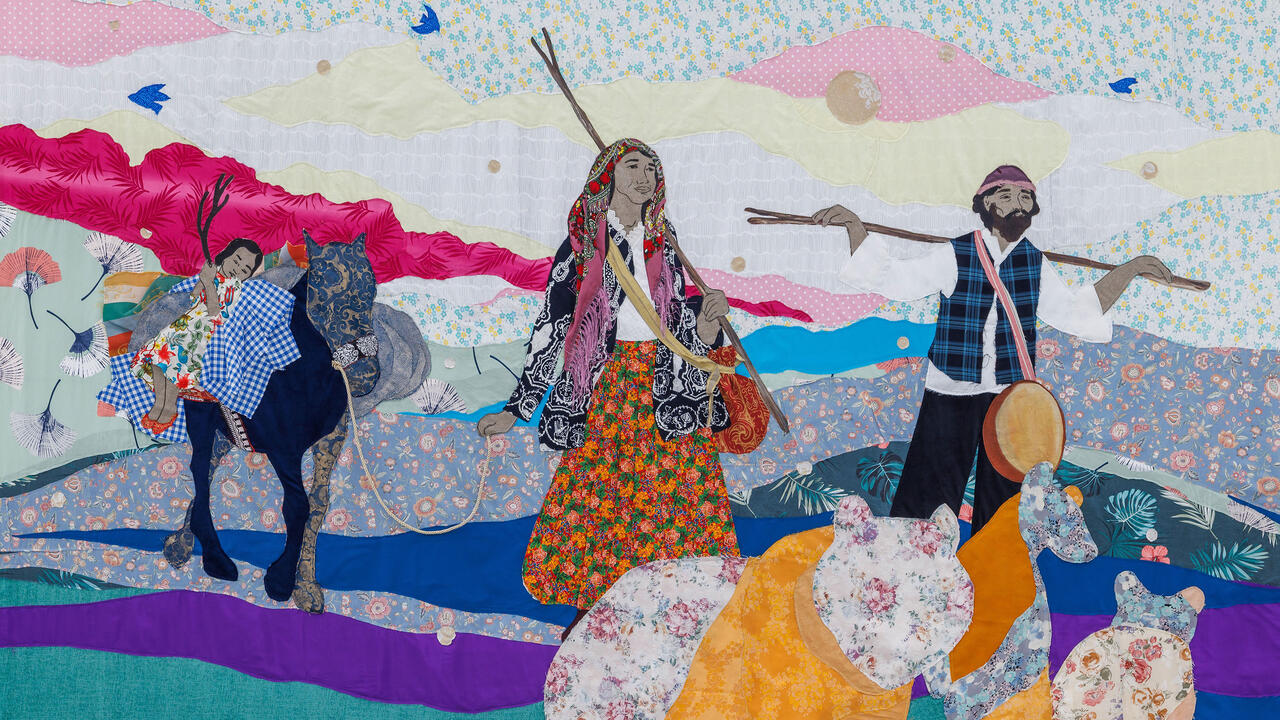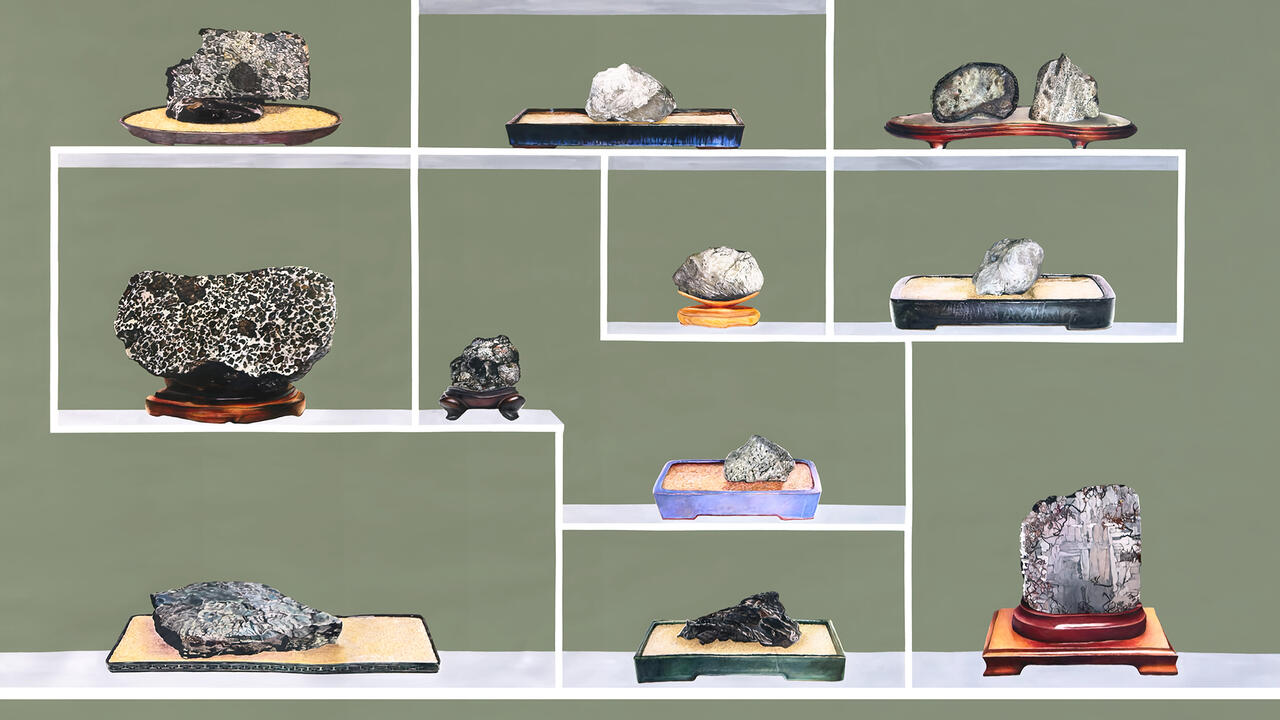How Will Martin Puryear Address Our Turbulent, ‘Interesting Times’?
The artist represents the US at this year’s Venice Biennale
The artist represents the US at this year’s Venice Biennale

In 2016, a forty-foot-tall sculpture by Martin Puryear was erected in Manhattan’s Madison Square Park, in view of the Empire State Building and some of the city’s toniest real estate. Big Bling, commissioned by the Madison Square Park Conservancy, amplifies the familiar Puryear template: lattices of laminated wood articulating a carefully balanced interplay of presence and void. Typically, his sculptures evoke a longstanding human tradition of functional carpentry and resonate with organic density. Though here, Puryear’s engagement with woven and mesh surfaces took a decidedly carceral turn. Big Bling is clad in chain-link fencing and capped with a gold-leaf bight that evokes either a manacle or weighty clasp. It is reminiscent of a mammal in repose, a spectacle in the spirit of Jeff Koons’s Puppy (1992). Big Bling’s ambivalent title wryly pre-empts its situation at the crossroads of a gilded neighbourhood and ambivalently editorializes on the hollow pursuit of luxury. Though work by Puryear, who is well into his eighth decade, is most affecting in less monumental contexts.
Fifty years of sculptures that simultaneously mimic or slightly exceed human scale established Puryear’s as among the medium’s most arresting and subtle in recent history. Raised in still-segregated Washington, DC, he was educated in the US and abroad, including a Peace Corps immersion among the Mende of Sierra Leone and two years in Stockholm with skilled craftsmen and furniture makers. Puryear had his first solo museum show, at the Corcoran Gallery of Art, in 1977.
During these early years, amid the reign of minimalism, with its hard edges and cerebral bent, Puryear offered a more humanistic perspective. Rooted in shared traditions of functional handmaking, his work in spruce, pine, wire and tar further ramified pre-war experiments with biomorphic abstraction. Sometimes this took an enigmatically historical turn, as in 1978’s Some Lines for Jim Beckwourth, for instance. Its seven strands of twisted rawhide extend some 23 feet across the galley wall, and allude to a 19th-century mountain man born into slavery before gaining notoriety as an explorer. But Puryear himself notes that his titles are often afterthoughts, secondary to formal considerations, that ‘I’ve never joined any kind of movement myself, and I can’t imagine requiring my art to serve an exclusively social or political role’. Instead (and like his late contemporary Jack Whitten), Puryear is driven less by the churn of politics, and more by questions of material, structure and perception that have guided (in historian Anne Wagner’s terms) homo faber for millennia.

Abstraction need not always mean mere formalism. As curator and historian Kellie Jones noted in 1989, on the occasion of the São Paolo Biennial where he won the Grand Prix, ‘Puryear explores not only exterior physical but also interior psychological space, and reflects a new sense of wholeness and balance, a contemporary American sculpture that benefits from pluralism and internationalism.’ He is, then, an obvious choice to represent the US at the 58th Venice Biennale, curated by Madison Square Park Conservancy’s Brooke Kamin Rapaport.
But it is also a safe choice. Puryear is a titan of modern sculpture and a veteran of both the world stage and large-scale public commissions, from Battery Park to central Tokyo. Rapaport suggests in a press statement that, ‘issues of citizenry, allegiance, democracy, liberty and responsibility have long propelled the artist’. To wit, the title and central theme of the exhibition is ‘Liberty/Libertà’, a collection of recent work. The centrepiece of the pavilion will be a new wooden armature, a colossal array of sinuous lines radiating from a central roundel and joined by interstitial grids.
But liberty is a relative term. Is it the freedom to create, or the freedom from oppression? Is this liberty as a texture of American life, or as a something to strive for anew? It is worth asking such questions in light of the US’s use of abstraction on the world stage as a metonym for the individual liberty so central to its self-identification during the Cold War and beyond? That story is threadbare by now, and much has changed since 1989, when the terms of debate in the art world were narrower, and the Western project assuredly on the march. Puryear’s sculpture, like a great deal of abstraction, contains a central duality: it is simultaneously a conduit for its idiosyncratic creator and a vessel for the projections and associations of the viewer. What it gains in scope, it often loses in addressing itself to messier, quotidian concerns.
Perhaps for this reason, the 2017 US representative to Venice, Mark Bradford, worked to subvert the more roseate and sublimated elements of his own abstraction, adapting abraded signage, rope, caulk and hair salon endpapers to evoke urban labour, and to produce a more abject, despoiled vision of a country that had long since forsaken many of its sacred mythologies. Similarly, as far back as 2003, during relatively less precarious times, Fred Wilson presciently foregrounded the presence of the African migrants – past and present – in the fabric of European life. Which is to say, although Puryear’s selection for the Venice Biennale is long overdue, one wonders how his installation, exquisite as it will be, might address itself to a landscape in which the Pax Americana, with all its strident connotations of ‘liberty’, is in decided retreat.
Main Image: Martin Puryear, New sculpture for the 2019 U.S. Pavilion, 2019. Courtesy: Madison Square Park Conservancy; photograph: Yasunori Matsui





